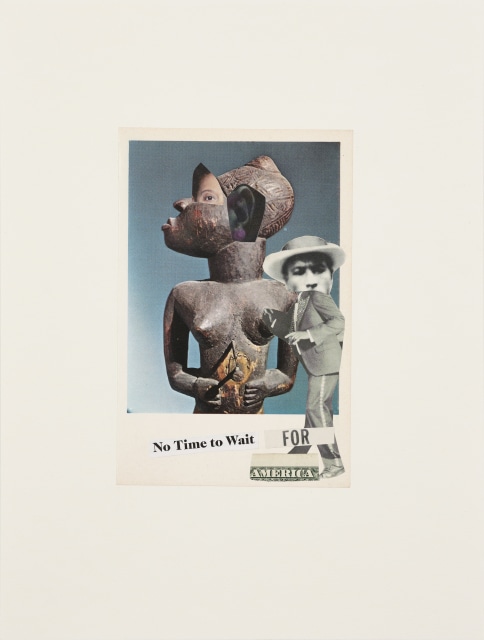WHERE IS BLACK ENOUGH, WHERE CAN BLACKNESS REACH, WHEN IS BLACK ENOUGH, WAS BLACKNESS FIRST, and other unanswered, unpunctuated queries rest under the repeated image of an unidentified Black child. Part of the artist’s latest series, Lost Boys, the child’s enigmatic and inscrutable gaze adds an element of mystery, illegibility, and depth to the works inviting viewers to consider the ways and locations in which Blackness has existed in society, from the foundation of civilization to the present day, in spaces of both invisibility and hypervisibility. Conceptually, the series delves into notions of lost innocence, identity, and the challenges faced by Black youth in navigating the complexities of society. The repeated image of the unidentified Black male child carries a symbolic weight, representing not only the individual, but also a broader collective experience. The anonymity of the child allows viewers to project their own perceptions, emotions, and narratives onto the figure, fostering a connection and empathy with the shared human experience.
The Lost Boys series invites contemplation on the profound impact of societal forces on the lives of Black children, exploring themes of marginalization, systemic racism, and the struggle for recognition and belonging. It raises questions about the ways in which society may fail to protect and nurture the innocence and potential of these young individuals. Aesthetically, the repeated faces, methodically applied with acrylic and ink through the silkscreen process, creates a visual rhythm and impact, drawing attention to the significance and urgency of the subject matter. The deliberate repetition serves to emphasize the prevalence of the experiences depicted and the interconnectedness of these individual lost stories. The choice of medium allows for repetition, while leaving space for each Lost Boy to remain unique, contributing to the overall aesthetic quality, evoking emotional resonance and capturing the vulnerability and resilience of the unidentified boys.
The exhibition showcases work across several mediums, including silkscreen, paintings, collages, and new works from the artist’s Unconformity series. The Unconformities are black abstract paintings made with materials from the earth, referencing that which has been lost or erased within the artist’s own family history, due to historical erasure and dislocation, inspired by the geological phenomenon known as The Great Unconformity - a gap in the Earth’s sediment hundreds of millions of years long. Working in several mediums is central to the artist’s practice, creating a visual language that is as multifaceted and complex as the themes addressed in the work. The artist is interested in using fragments, piecing together mediums, aesthetic approaches, and visual content, which then allows for the exploration of fragmented histories, by joining together elements from the past to shed light on the present. It enables the artist to examine the complexities of Black identity, incorporating elements of cultural memory, social commentary, and personal storytelling. Through collage and the interplay of different mediums, the artwork can evoke a sense of hybridity, transcending traditional boundaries and questioning fixed notions of Blackness.
Our understanding of the world and our identities is shaped by the stories we tell. Our ability to share our stories is shaped by having access to our history and the privilege of preserving it. In this presentation of works, Claiborne offers the idea of Blackness as an evolving landscape of lost histories. Blackness is a vast and boundless landscape, shaped by the forces of time, with mountains of progress and valleys of despair, a place where the past and present intersect, and the future is still being written.


